
On 14 Jul 1862, Florence Bascom was born. Her early interest in geology is attributed to a driving tour with her father and his friend Edward Orton, a geology professor at Ohio State. She became a leader in the advancement of women scientists, and achieved a number of firsts in as a woman in the field of geology. Bascom became the first woman to receive a doctorate from Johns Hopkins University and two years later she launched the geology department at Bryn Mawr. She was the first woman to work as a geologist for the U.S. Geological Survey and to be made a fellow of the Geological Society of America. Bascom had expertise in crystallography, mineralogy, and petrography. She is remembered for inventing techniques that used microscopic analysis in the study of the oil-bearing rocks. Read more in this article on this interesting woman.

On 14 Jul 1887, Alfred Krupp died, known as the “Cannon King.” The Krupp family were the premier German arms manufacturers from the middle of the 19th century until the end of World War II, producing artillery pieces and submarines that set the standard for effectiveness. Today's book pick is: The Arms of Krupp: The Rise and Fall of the Industrial Dynasty That Armed Germany at War, by William Manchester. This colorful, extremely readable account is the work a hugely successful popular historian, who wrote a number of books, including a two-volume biography of Winston Churchill, The Last Lion, as well as assorted works of journalism.
Manchester’s narrative of the Krupp dynasty details the rise and fall of one of the most powerful families in history and its role in the development of the Steel industry in the Ruhr Gebiet in Germany. The time span Manchester covers is set relative to German history, from its beginnings with the “forest mythology” of the Roman era, all the way up to the 1960s. The family’s wealth originated with Arndt Krupp surviving the Black Plague and purchasing land that just happened to contain the richest coal deposits in Europe.
Unlike most industrial families, the Krupps understood very early on that the health and welfare of the workers was a necessity to the survival and prosperity of die Firma itself. But in the 20th century, the later Krupps’ treatment of the slave labor (Jewish and Eastern “stucke”) was appalling. Indeed, the Krupps of that era violated even the pathetic SS prisoner treatment rules, formed an internal Gestapo, and tortured workers accused of crimes as petty as stealing food. The author spends much time on the Holocaust and Krupps’ involvement in it as they raided captured factories across Europe and enslaved tens of thousands.
It is available from Amazon, typically about New from $16.28. Used from $2.70. (As of earlier time of writing - subject to change.)
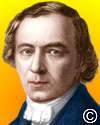 | In chemistry, our theories are crutches; to show that they are valid, they must be used to walk... A theory established with the help of twenty facts must explain thirty, and lead to the discovery of ten more. |
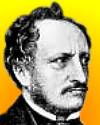 | A good physiological experiment like a good physical one requires that it should present anywhere, at any time, under identical conditions, the same certain and unequivocal phenomena that can always be confirmed. |
 | The fascination of any search after truth lies not in the attainment, which at best is found to be very relative, but in the pursuit, where all the powers of the mind and character are brought into play and are absorbed by the task. One feels oneself in contact with something that is infinite and one finds joy that is beyond expression in sounding the abyss of science and the secrets of the infinite mind. |
| Before you look at today's web page, see if you can answer some of these questions about the events that happened on this day. Some of the names are very familiar. Others will likely stump you. Tickle your curiosity with these questions, then check your answers on today's web page. | |
| Births | |
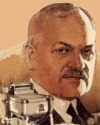 | On 14 Jul 1857, an American man, now a household name was born. In 1893, he joined three other men to start a farm implement company producing threshing machine, band-cutter and self-feeder attachments invented by one of the founders of the company. It operated in 30 x 40-ft stove works in Newton, Iowa. In 1907, a sideline to the farm equipment line was started, intended that this new product would solve seasonal slumps in the farm equipment business and fill the need for a home washing machine. Can you name this man? |
| Deaths | |
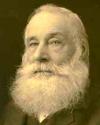 | Sir William Perkin (1838-1907) was an English chemist and inventor. As a youth, he was turned on to chemistry by Faraday’s public lectures. While experimenting to make quinine from coal tar, Perkins created a densely colored compound, the first artificial dye. At the age of 18, he patented the dye, and with his father’s support, he manufactured it. This valuable alternative to dyes from natural sources went on sale in 1857. By age 23, he was building a new synthetic organic chemical industry. What was the colour of this first artificial dye? |
 | A French physicist who investigated the effect of interference of light first observed the fringes produced that are still known by his name. He identified that white light is composed of a spectrum of innumerable wavelengths ranging from red to shorter violet wavelengths, and experimented with polarized light. His stepped lens design used for the beams of lighthouses and are known by his name. His pioneering work in optics did much to establish the Thomas Young’s wave theory of light. Can you name this scientist? |
| Events | |
 | On 14 Jul 1965, the Mariner 4 satellite sent a transmission of the first close-up photograph of a certain heavenly body. It consisting of 8.3 dots per second of varying degrees of darkness. It depicted the regions on this body known as Cebrenia, Arcadia, and Amazonis. What was the body being photographed? |
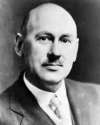 | On 14 Jul of a certain year, the first patent for a liquid-fueled rocket design was granted to Dr Robert Hutchins Goddard. His first rocket reached a height of 12.5 metres. In which decade was this patent issued? |
Fast answers for the previous newsletter for July 13: Erno Rubik, Hungarian • Puffing Billy • first colour photographic plate • fresh citrus fruits and lemon juice • No. 1 • the decade including the year 1977.
 If you enjoy this newsletter, the website, or wish to offer encouragement or ideas, please send feedback by using your mail reader Reply button.
If you enjoy this newsletter, the website, or wish to offer encouragement or ideas, please send feedback by using your mail reader Reply button. Your click on a Facebook, StumbleUpon, or other social button on the site webpages is also a welcome sign of appreciation. Thank you for using them.
© This newsletter is copyright 2020 by todayinsci.com. Please respect the Webmaster's wishes and do not put copies online of the Newsletter — or any Today in Science History webpage. (If you already have done so, please remove them. Thank you.) Offline use in education is encouraged such as a printout on a bulletin board, or projected for classroom viewing. Online, descriptive links to our pages are welcomed, as these will provide a reader with the most recent revisions, additions and/or corrections of a webpage. For any other copyright questions, please contact the Webmaster by using your mail reader Reply button.
--
If you do not want to receive any more newsletters, Unsubscribe
To update your preferences and to unsubscribe visit this link
Executive Real Estate Business Class
-
"It was like a man with wings. It wasn't like anything you'd see on TV or in a monster movie." ...
About the publisher
Search This Blog
Blog Archive
-
▼
2021
(585)
-
▼
July
(50)
- Newsletter for Saturday 31 July.
- Newsletter for Friday 30 July.
- Power off and play this summer!
- Newsletter for Thursday 29 July.
- Newsletter for Wednesday 28 July.
- Newsletter for Tuesday 27 July.
- Newsletter for Monday 26 July.
- Newsletter for Sunday 25 July.
- Newsletter for Saturday 24 July.
- Newsletter for Friday 23 July.
- Newsletter for Thursday 22 July.
- Newsletter for Wednesday 21 July.
- Newsletter for Tuesday 20 July.
- Newsletter for Monday 19 July.
- The Machines That Built America Premieres Tonight
- Newsletter for Sunday 18 July.
- Newsletter for Saturday 17 July.
- Newsletter for Friday 16 July.
- Newsletter for Thursday 15 July.
- Newsletter for Wednesday 14 July.
- Newsletter for Tuesday 13 July.
- On This Day for July 12 - Geraldine Ferraro design...
- Newsletter for Monday 12 July.
- Inventing ‘The Machines That Built America’
- On This Day for July 11 - Duel between Aaron Burr ...
- Newsletter for Sunday 11 July.
- On This Day for July 10 - Telstar 1 launched, John...
- Newsletter for Saturday 10 July.
- On This Day for July 9 - Catherine the Great assum...
- Newsletter for Friday 9 July.
- New Season! Hope, Through History Podcast
- On This Day for July 8 - Vasco da Gama's first voy...
- Newsletter for Thursday 8 July.
- Ending soon: savings that pop! 🎆
- On This Day for July 7 - Hawaiian Islands annexed ...
- Newsletter for Wednesday 7 July.
- On This Day for July 6 - Anne Frank forced into hi...
- Newsletter for Tuesday 6 July.
- On This Day for July 5 - Israel's Law of Return pa...
- Newsletter for Monday 5 July.
- On This Day for July 4 - Declaration of Independen...
- Newsletter for Sunday 4 July.
- July 4th Sale at the HISTORY Store!
- On This Day for July 3 - Battle of Gettysburg ende...
- Newsletter for Saturday 3 July.
- On This Day for July 2 - Civil Rights Act signed, ...
- Newsletter for Friday 2 July.
- July 4th savings that pop!
- On This Day for July 1 - Dominion of Canada establ...
- Newsletter for Thursday 1 July.
-
▼
July
(50)
-
Blogroll
-
About
HistoryFact










0 comments:
Post a Comment